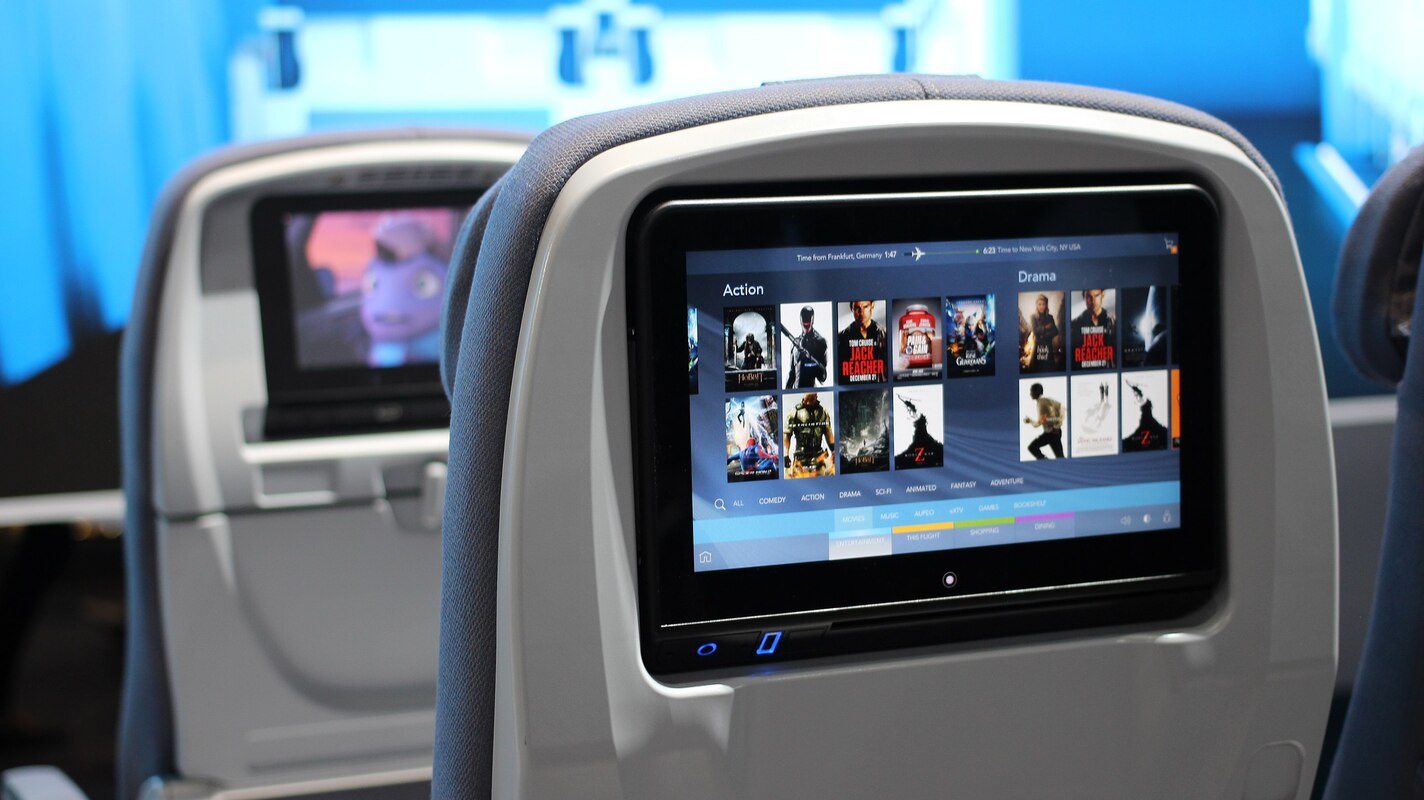Skift Take
In-flight entertainment has long been a critical part of airlines' efforts to attract travelers, and the increasingly lucrative sector is poised to provide major carriers more opportunities to stand out from rivals.
Airlines have been working to improve in-flight entertainment options for years, with Skift Research stating in a 2014 report that it was an important factor for airlines to compete.
How are airlines looking to beef up the options they provide? And what else can be expected from a sector that’s expected to grow from being worth close to $6 billion in 2022 to roughly $14.5 billion by 2033?
Here’s a look at some recent advances that have helped airlines increase in-flight entertainment options for travelers.
Teaming Up With Streaming Services
Major airlines have looked in recent years to take advantage of the booming streaming industry, which is expected to be worth $330 billion by 2030. In addition, 85% of U.S. percent of households have at least one video streaming subscription.
JetBlue Airways, which has already had streaming partnerships with Showtime and Amazon, announced last December that Peacock would be its official streaming partner starting later this summer. Mariya Stoyanova, JetBlue’s Director of Product Development, said travelers with a Peacock account will be able to stream all of the platform’s content from their own devices during flights. Stoyanova added that Peacock subscribers will have access to its entire catalog without having to buy Wi-Fi since JetBlue doesn’t charge for it onboard its flights. In addition, passengers without an existing Peacock account would be able to sign up inflight with Fly-Fi.
American Airlines has taken similar steps. The company offers the use of an Apple Music subscription to stream inflight without the purchase of Wi-Fi. Passengers without a subscription can also obtain a two-month free trial that can be accessed inflight.
But while Southwest Airlines, which has partnered with iHeart Radio since 2018, is open to teaming up with more services, United Airlines has opted to take a different approach.
“We don’t have a partnership in that space,” said Mark Muren, the company’s managing director of identity, product and loyalty. “But we think we’ve got something far better than that. We think we’ve got an opportunity for every single person on an airplane to pick their content on demand.”
A Boost From Aircraft Improvements
Airlines’ efforts to improve in-flight entertainment options have gotten a major assist from improvements in aircraft designs. Hawaiian Airlines is installing new in-flight entertainment systems on its Boeing 787-9, which will start flying in the first quarter of 2024. The company’s 787 premium cabin will have 18-inch in-flight entertainment screens while the main cabin will offer 12-inch seatback monitors.
Meanwhile, United has unveiled plans to introduce the Astrova in-flight entertainment system with Panasonic’s 4K OLED TVs on its new Airbus A321XLRs and Boeing 787s starting in 2025. Why Astrova?
“I think it is the biggest screen on the marketplace. They’ve got a range of sizes,” Muren said, adding he believes Astrova provides the best hardware. “The highest definition I think that’s ever flown — 4K OLED, which is better than I have in my living room.”
Showcasing More Than Movies and Music
Although movies, music and TV shows may be the most popular forms of in-flight entertainment, carriers such as Hawaiian Airlines also believe they can appeal to travelers by providing them with educational content. Hawaiian started running a landing video in 2021 on all inbound transpacific flights that features tips from its employees about traveling in the Aloha State.
“As Hawaii’s hometown airline, we have always showcased in-fight content that engages our guests in learning about the islands’ people, culture and places,” said Evan Nomura, director of in-flight entertainment and connectivity and onboard products at Hawaiian Airlines.
“(And) as travel to Hawaii began to rebound following the relaxation of Covid-related travel restrictions, we decided it was a good time to double-down on content about how to best protect Hawaii’s increasingly fragile ecosystems, care for the community and prioritize safety while at beaches, hiking, etc.”
Likewise, American Airlines’ educational offerings feature programs run by language learning software Rosetta Stone and online learning program Skillshare.
“We believe that customers still very much enjoy traditional content, but entertainment goes beyond movies, TV and music,” an American representative said.
UPDATE: The article has been amended to stay that JetBlue does not charge for the use of Wi-Fi on its flights.
The Daily Newsletter
Our daily coverage of the global travel industry. Written by editors and analysts from across Skift’s brands.
Have a confidential tip for Skift? Get in touch
Tags: american airlines, hawaiian airlines, in-flight, in-flight entertainment, jetblue, jetblue airways, southwest airlines, streaming
Photo credit: Airlines have sought to increase their in-flight entertainment options for travelers Maurizio Pesce / Wikimedia Commons
